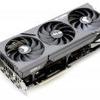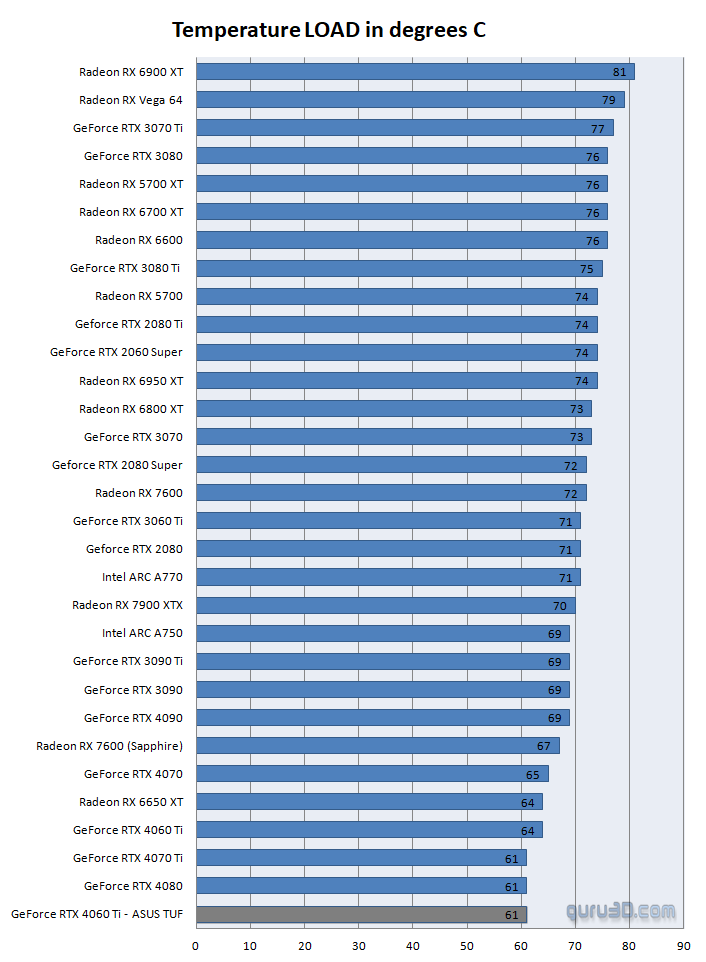Graphics card temperatures
Graphics card temperatures
In this analysis, we will examine the temperature performance of various graphics processing units (GPUs). Firstly, we will assess the idle temperatures of the GPUs as reported by the thermal sensors and software. To provide additional context, we will also include data from other GPUs that we recently tested in the chart.
To further evaluate the thermal management capabilities of these GPUs, we subjected them to a rigorous gaming workload and monitored their temperatures during peak performance. Using a GPU stress loop, we measured the highest temperature reported by the thermal sensor when the GPU was fully stressed. We conducted these tests in a controlled environment with a room temperature of approximately 20-21 degrees Celsius. By analyzing the thermal performance of these GPUs, we can gain insight into their ability to handle high-intensity workloads and maintain stable performance. The data collected in this analysis can help inform purchasing decisions for individuals seeking a reliable and high-performing GPU.
So with the card fully stressed, we kept monitoring temperatures and noted down the GPU temperature as reported by the thermal sensor. These tests have been performed with a 20~21 Degrees C room temperature, this is a peak temperature based on a GPU stress loop.




